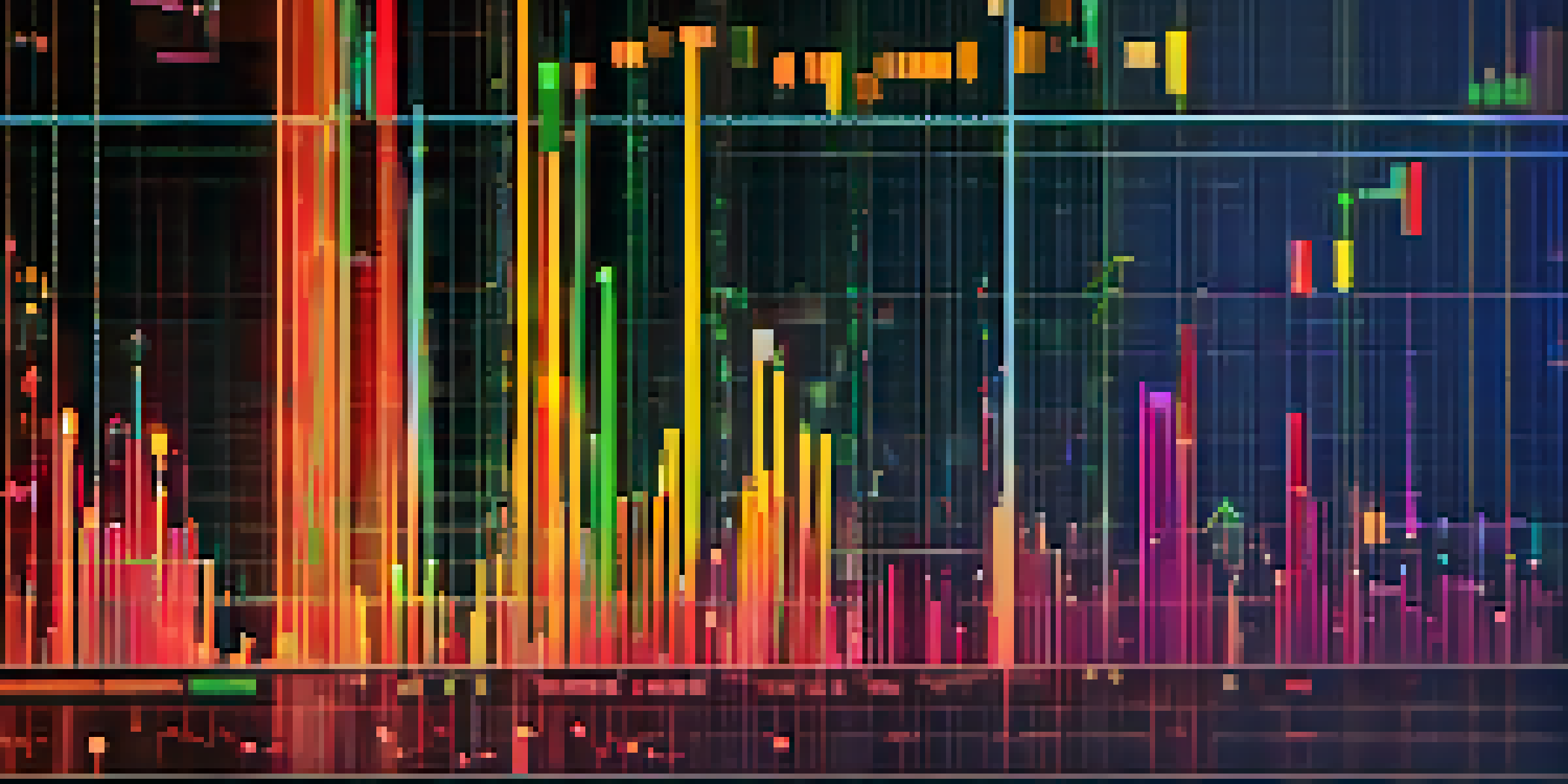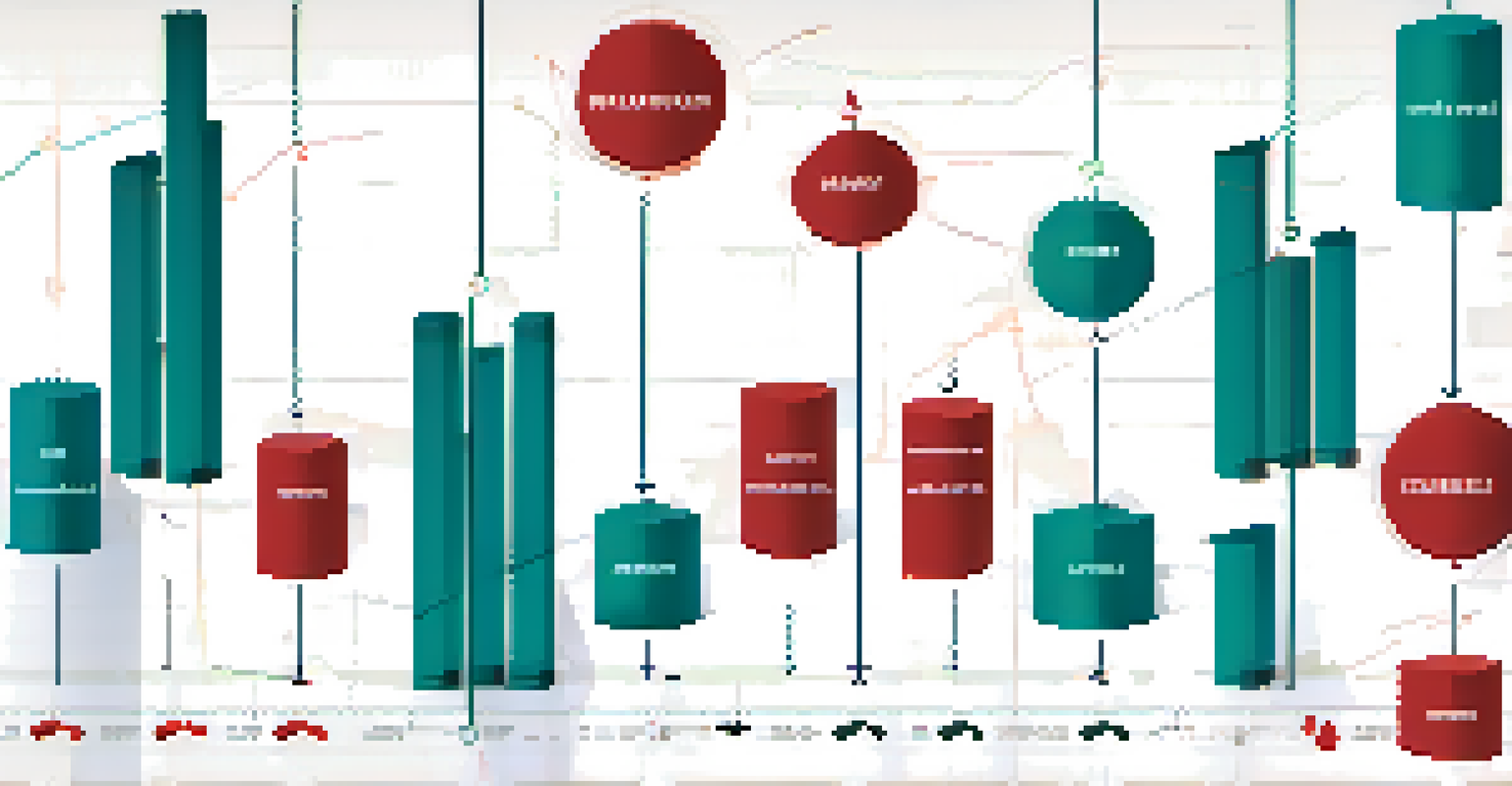Understanding Candlestick Patterns in Crypto Technical Analysis

What Are Candlestick Patterns and Why Use Them?
Candlestick patterns are visual tools used in technical analysis that represent price movements over specific time frames. Each candlestick shows four key data points: open, high, low, and close prices. These patterns help traders make informed decisions by giving insights into market sentiment and potential future movements.
In trading, it's not about how much you make but how much you don't lose.
In the volatile world of cryptocurrency, where prices can swing dramatically in short periods, understanding these patterns is crucial. They can indicate whether a market is bullish (rising) or bearish (falling), helping you to identify entry and exit points. This knowledge can significantly improve your trading strategy and risk management.
By learning to read these patterns, you can better anticipate market trends. It’s like having a map when navigating a new city; it shows you where to go and where to avoid. In short, mastering candlestick patterns can give you a competitive edge in the crypto trading landscape.
The Basics of Reading Candlestick Charts
Reading candlestick charts begins with understanding the components of a single candlestick. The body represents the range between the open and close prices, while the wicks (or shadows) show the highest and lowest prices reached during the period. This visual representation helps traders quickly assess price action at a glance.

For instance, a long green candlestick signals strong buying pressure, while a long red candlestick indicates selling pressure. The size and color of the candlestick can tell you a lot about market sentiment. Recognizing these cues can help you gauge whether to enter a trade or hold back.
Candlestick Patterns Guide Trading
Understanding candlestick patterns helps traders gauge market sentiment and identify potential entry and exit points.
As you familiarize yourself with these charts, you'll start to notice patterns emerging over time. Just like reading a story, each candlestick adds context to the market narrative. This understanding is essential for developing your trading strategies and making informed decisions.
Common Bullish Candlestick Patterns Explained
Bullish candlestick patterns signal potential price increases and can be vital for traders looking to buy. One of the most common patterns is the 'hammer,' which appears at the bottom of a downtrend and indicates a potential reversal. The hammer has a small body with a long lower wick, suggesting that buyers are starting to gain control.
The market is a device for transferring money from the impatient to the patient.
Another important bullish pattern is the 'bullish engulfing' pattern, where a larger green candle completely engulfs the previous red candle. This pattern is often seen as a strong indication that buyers are overwhelming sellers, signaling a possible upward momentum. Recognizing these patterns can help traders make timely entries into the market.
Lastly, the 'morning star' pattern, which consists of three candles, shows a transition from bearish to bullish sentiment. The first candle is bearish, followed by a small-bodied candle, and then a bullish candle. This pattern illustrates a shift in market control and can serve as a solid entry point for traders.
Common Bearish Candlestick Patterns to Watch For
Just as there are bullish patterns, bearish candlestick patterns signal potential price declines. A well-known bearish pattern is the 'shooting star,' which appears at the top of an uptrend. It features a small body with a long upper wick, indicating that buyers pushed the price up but sellers took control, causing the price to close near the opening.
Another significant pattern is the 'bearish engulfing' pattern, where a red candle engulfs a preceding green candle. This pattern suggests a shift in momentum, indicating that sellers are gaining strength. Recognizing this pattern can help traders identify when to sell or exit a position before losses mount.
Context Enhances Pattern Reliability
Analyzing candlestick patterns within their market context and alongside other indicators improves decision-making and reduces false signals.
Lastly, the 'evening star' pattern, which is the opposite of the morning star, consists of three candles: a bullish candle followed by a small-bodied candle and then a bearish candle. This pattern indicates a reversal from bullish to bearish sentiment and can signal traders to prepare for a potential downtrend.
The Importance of Context in Candlestick Patterns
Understanding candlestick patterns in isolation can be misleading; context is key. Patterns should always be analyzed in conjunction with other technical indicators, market trends, and trading volumes. For example, a bullish pattern appearing during a strong uptrend can provide more confidence than the same pattern in a sideways market.
Additionally, support and resistance levels can influence the reliability of candlestick patterns. A bullish pattern forming at a support level may indicate a stronger reversal potential, while one at a resistance level may face more obstacles. Contextualizing these patterns helps traders avoid false signals.
In essence, think of candlestick patterns as clues in a larger mystery. Each pattern tells part of the story, but it's the surrounding context that reveals the full picture. This holistic approach will enhance your decision-making process and lead to more successful trades.
Common Mistakes to Avoid with Candlestick Patterns
One of the most common mistakes traders make is relying solely on candlestick patterns without considering other indicators. While these patterns can provide valuable insights, they shouldn't be used in isolation. It's essential to incorporate other tools, such as moving averages or volume analysis, to confirm signals before making a trade.
Another pitfall is misinterpreting the patterns due to a lack of context. For instance, a bullish engulfing pattern in a downtrend may not be as reliable as it would be in an uptrend. Always consider the broader market conditions and the timeframe you are analyzing to avoid making hasty decisions based on incomplete information.
Avoid Common Trading Mistakes
Traders should not rely solely on candlestick patterns and must consider broader market conditions to avoid hasty decisions.
Lastly, some traders may fall into the trap of overtrading, reacting to every candlestick pattern they see. This can lead to unnecessary losses and increased transaction costs. Instead, focus on high-probability setups and be patient; the market will always present more opportunities.
Practical Tips for Using Candlestick Patterns in Trading
To effectively use candlestick patterns in your trading strategy, start by practicing with historical charts. Analyze past price movements and identify patterns that preceded significant price changes. This practice can help you recognize these patterns in real-time and build your confidence in trading decisions.
Additionally, set clear entry and exit points based on the patterns you identify. Having a plan in place can help you avoid emotional trading and make more disciplined decisions. Consider using stop-loss orders to manage risk, especially in the unpredictable crypto market.

Lastly, continuously educate yourself about new patterns and market behavior. The crypto landscape is always evolving, and staying updated on trends and techniques will keep you ahead of the curve. Engaging with trading communities and resources can provide valuable insights to refine your skills.